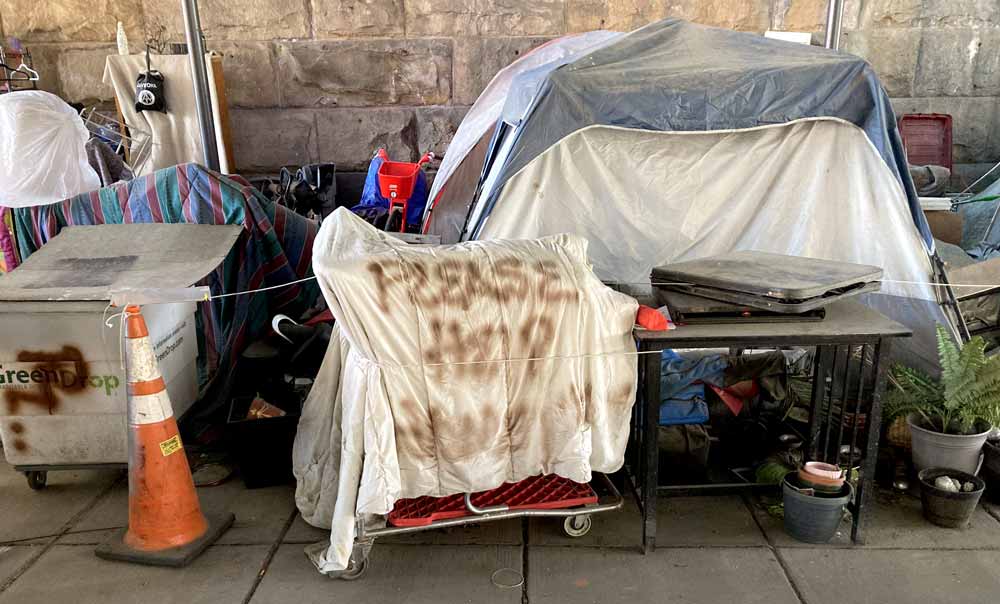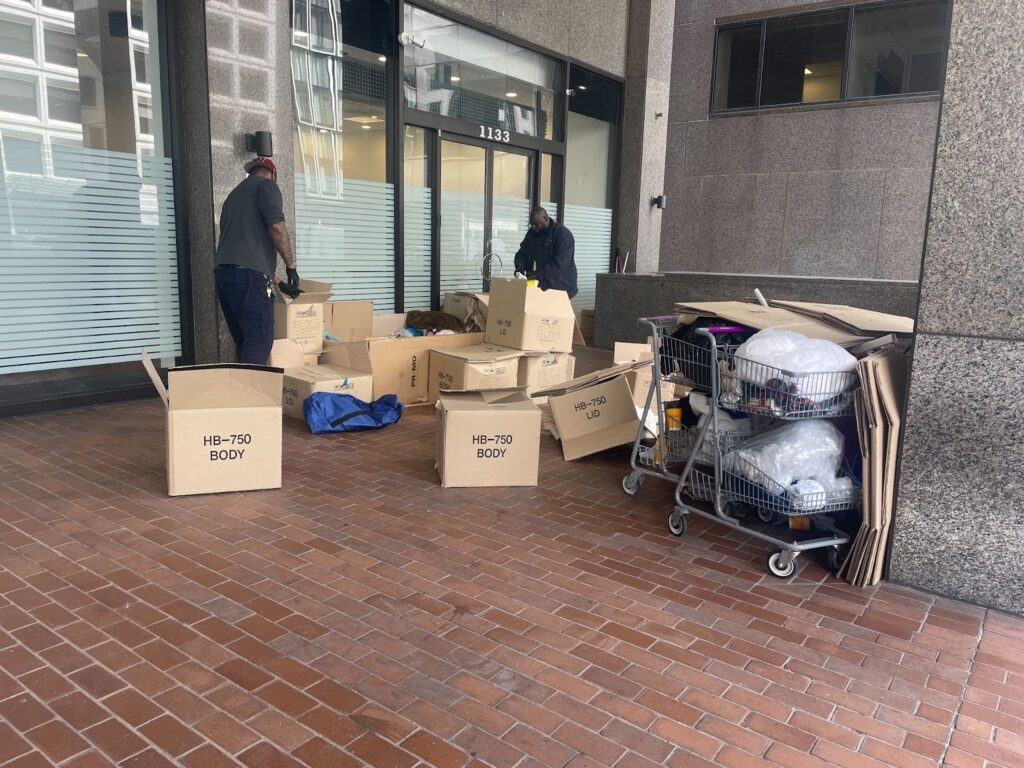D.C. Mayor Muriel Bowser is expected to release her fiscal year 2022 budget proposal on May 27; although the D.C. Council will amend it before it becomes law, Bowser’s proposed budget will be an influential starting point in deciding the future of funding for homeless services in D.C.
The ongoing COVID-19 pandemic has touched nearly every element of D.C.’s and the region’s homeless services systems. The mayor’s budget proposal will likely reflect the unique challenges — and opportunities, like increased federal support — brought on by the pandemic.
In the background of the debate on the budget, the Metropolitan Washington Council of Governments released a report on May 12 on the number and demographic information of all people experiencing homelessness in the region, showing sustained progress in reducing many forms of homelessness.
The report packages data collected during this year’s Point-In-Time count, a HUD-mandated, volunteer-driven attempt to count every person in the region experiencing homelessness on Jan. 27, 2021.

Across COG’s jurisdictions, which include D.C. and surrounding counties in Virginia and Maryland, there were 1,454 fewer people experiencing homelessness in 2021 than in 2020, a 15% decrease. D.C. alone accounted for 1,269 of those fewer people, representing a 20% decrease.
The region has seen a 25% decrease in people experiencing homelessness since 2017. D.C. saw a 32% decline in that period. The number of people experiencing homelessness was the lowest it has been since COG began coordinating counts in 2001.
Much of this progress was driven by a sharp reduction in family homelessness, which has fallen by 57% in the region since 2017.
Hilary Chapman, the report’s author, and Kristy Greenwalt, co-chair of the COG Homeless Services Committee, agreed that the federal and local eviction moratoriums were a major factor in reducing family homelessness.
“No doubt the eviction moratorium played a role in that [decrease],” Greenwalt said while presenting the report to the COG board of directors.

There is a moratorium on evictions in D.C. until Sept. 22 — 60 days after the mayor’s health emergency order expires on July 25 — and until June 30 in Virginia. Maryland’s pause on evictions expired on July 25, 2020 but the state is still covered by the federal eviction ban, in place until June 30.
Greenwalt also credited investments made by the D.C. government that target family homelessness specifically, including elements of the Homeward D.C. plan like funding for more supportive housing and for the new Short-Term Family Housing shelters that have replaced the D.C. General shelter.
Beyond the moratorium, more help is on the way, according to Greenwalt. Federal funding provided by the December 2020 and the March 2021 stimulus bills is just starting to reach agencies, Greenwalt said, who are now developing the plans and infrastructure to use that money.
Veteran homelessness also declined in the 2021 count. The decrease was modest (in the region, 12 fewer veterans experienced homelessness in 2021 than in 2020), but it continued the downward trend of a 16% decrease since 2017 and represented the lowest number ever recorded by COG.

The number of formerly homeless people who are in housing broke 25,000 in 2021, up from just over 19,000 in 2017.
However, data collected in the PIT count showed the ongoing challenges of addressing homelessness comprehensively in the region. The number of individuals experiencing chronic homelessness increased by 4% since 2017 in the region and 10% in D.C. A chronically homeless person is someone who has a disability; sleeps unsheltered or in shelter; and has been homeless consistently for a year or more, or has had four separate episodes of homelessness within the last three years.
“The number one reason [for the rise in chronic homelessness] comes down to the fact that the scale of need relative to the amount of housing resources that we all have available to help people means we don’t have the ability to help someone with housing the second they experience our homeless services system and a lot of people end up timing into this chronic definition,” Greenwalt said in her presentation. “We are sort of creating chronic homelessness because we don’t have the resources to help quickly enough.”
High housing costs are partially responsible for an increase in chronic homelessness nationwide, according to Hilary Chapman, a housing manager at COG and one of the report’s authors. But the report on the PIT count data also noted other causes of chronic homelessness, including the fact that virtual operations may have slowed the ability to place people from shelters into housing resulting in them being homeless so long that they meet HUD’s definition of “chronic homelessness.”

The city of Frederick, MD, and Frederick County are components of the DMV that did not collect information on chronically homeless people, both single adults and those in families, so the real number of chronically homeless people in 2021 is likely to be higher than reported.
Still, at a more granular level the report showed hidden successes in reducing chronic homelessness. For example, between 2017 and 2021 the city of Alexandria and Montgomery County saw rates of chronic homelessness decrease by 51% and 68%, respectively.
The report demonstrated persistent racial disparities in homelessness. Black people continue to be heavily overrepresented among people experiencing homelessness in the region. Eighty-two percent of people experiencing homelessness in families and 75% of single individuals experiencing homelessness were Black, but Black people only make up 25% of the COG region’s combined population.
“It is important to note that a root cause of the disproportionate representation of people of color is a legacy of institutional and systemic racism that impacts our communities to this day,” said Tom Barnett, director of Fairfax County’s Office to Prevent and End Homelessness, presenting the report to the COG board of directors. He added that COG has contracted with a consulting firm to find solutions to reduce racial inequity and anticipates those results by next year.


Greenwalt also said that in spite of what some people expected, an increase in homelessness as a result of the pandemic probably won’t be measurable until next winter, in time for the 2022 PIT count. Eviction cases will need time to work their way through landlord-tenant court and people generally exhaust all other financial options before leaving their homes, so there may be months of lag time before the effect of the pandemic on homelessness is truly felt.
HUD’s PIT count has faced criticism for presenting incomplete information about the homeless community. Critics have argued that because it is only a snapshot of homeless people that volunteers are able to individually count on a single night, it leaves out important context and understates the scale of the homelessness crisis.
For instance, the PIT count does not include people who are “doubled up,” or living with friends or relatives because they have nowhere else to stay, but who are not technically “homeless” by HUD’s definition.
[Read more: As its more comprehensive report on homelessness lags years behind, critics question HUD’s data]
Greenwalt acknowledged the count’s limitations in her testimony. “There are inflows and outflows every single night of the year. New people experience homelessness, other people leave the homeless services system to housing,” Greenwalt said, “so in some ways the point-in-time count minimizes the scope of the problem and the challenge that we all face.”
Kate Coventry, a senior policy analyst with the D.C. Fiscal Policy Institute, said that despite advocates’ claims that the PIT count is not perfect, “no one thinks it is. But it is a measure.”
She added that policymakers in D.C. have access to supplementary reports and information on homeless demographics to inform their decisions, including, for example, the total number of people who have had contact with the homeless services system over the course of a given year.
In her testimony, Greenwalt said that figure is often two to three times higher than the number of people experiencing homelessness on just one night. Nationwide, in 2018, it was three times larger.
Coventry said the PIT count data came out too late in the year to play a direct role in determining where Bowser will recommend allocating funding. But the PIT count process as a whole plays an important role in establishing a profile of homelessness in the region, which in turn informs funding decisions.
Ultimately, regardless of the PIT count’s findings or the mayor’s budget proposal, the future of homelessness policy is going to be heavily influenced by the impending end of the eviction moratoriums in place across the region, according to Chapman and Greenwalt. Municipalities within the COG are planning for that in their own ways.
A foreshadow of the political fights that the end of the moratorium might bring was on display at the D.C. Council last week: Council Chair Phil Mendelson proposed ending the moratorium to incentivize tenants and landlords to apply for federal relief funding that will go to waste if not used, but tenant advocate organizations strongly opposed the measure and councilmembers voted it down, saying that the city was not ready for evictions to resume. The question of how to use the federal funding in time has still not been resolved.








